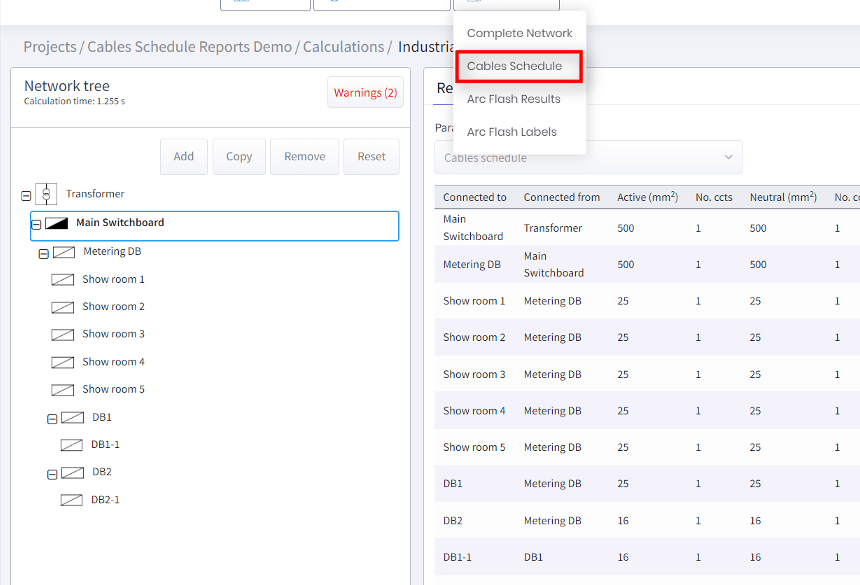Cable Sizing Overview
The fundamental principles of cable sizing outlined in this tutorial are universal – they apply to all standards.
The minimum size of a low-voltage power cable is determined for a particular installation based on its ability to satisfy current-carrying capacity, voltage drop, and short-circuit performance/rating.
1. Current-carrying Capacity
Current carrying capacity, often called ampacity, is the maximum amount of electric current a cable can safely conduct without exceeding its temperature rating. This limit is determined by the cable’s conductor material, insulation type, installation method, ambient temperature, and external factors. Constant constant current (100 % load factor) and constant ambient conditions are assumed.
The current-carrying capacity dictates the active cable size for large load currents.
2. Voltage Drop
Voltage drop is the reduction in voltage that occurs as current travels through a cable due to the conductor’s inherent impedance. This drop is influenced by factors such as the phases of the supply, the length of the cable, the cross-sectional area, the material, the operating temperature of the conductor, the amount of current flowing, and the power factor of the load it supplies.
The voltage drop dictates the active cable size for long route lengths.
3. Short-circuit Rating
Short circuit rating is the maximum current a cable can safely carry for a very short duration during a fault condition, such as a short circuit, without sustaining damage. The minimum cable size to withstand the short-circuit current is determined based on the actual short-circuit current and the specified period (fault clearing time of the protection obtained from the time-current curve).
The short circuit rating (rarely) dictates the active size for short cable runs carrying a small load current and where the supply’s fault level is high.
Other Important Principles
The following related topics are mentioned in the cable sizing calculation training:
1. Minimum Conductor Size for Mechanical Strength
2. Cable Sizing Coordination with Protective Device
3. Cable Temperature Limits by Insulation Type
6. Conductors in Parallel





